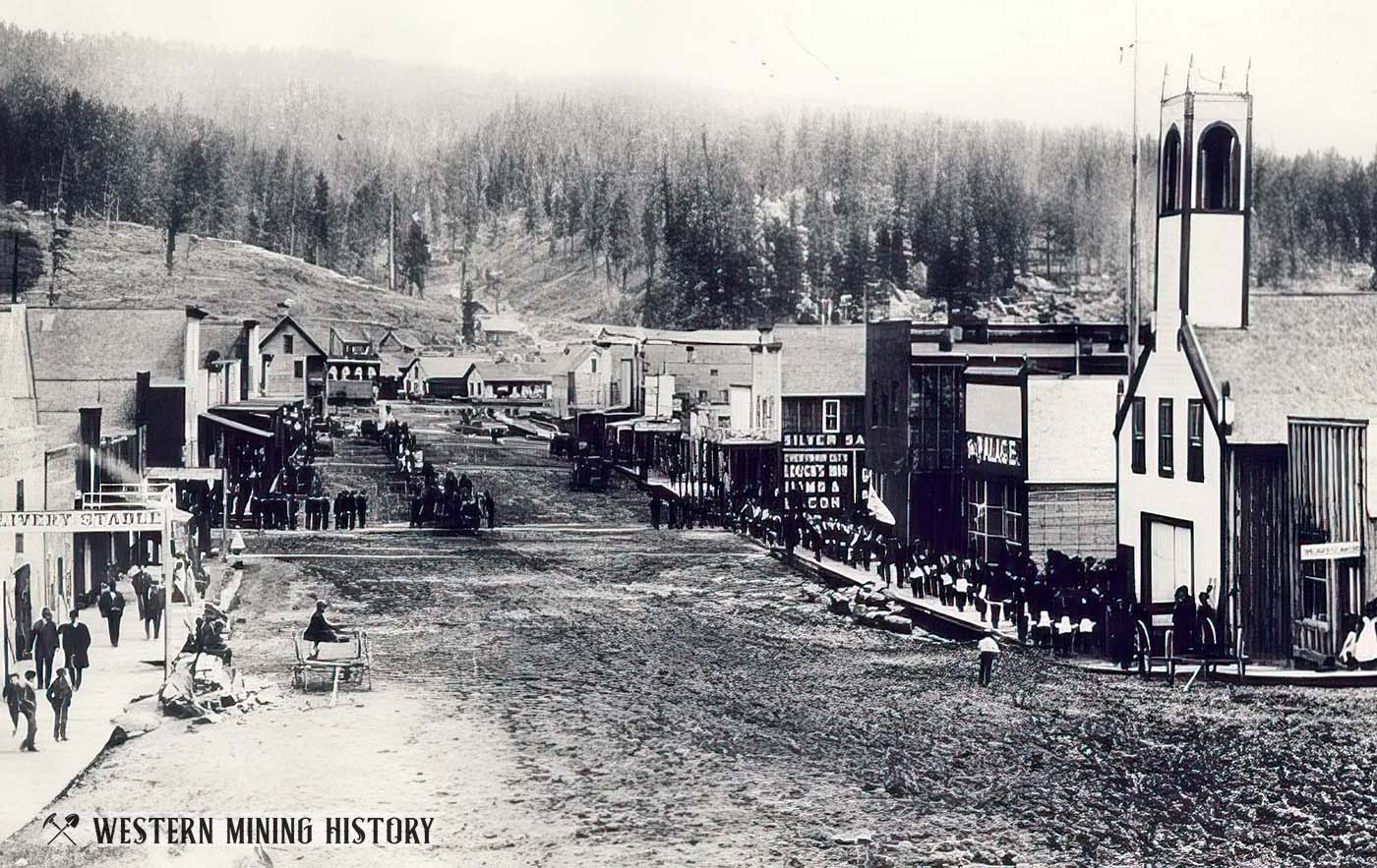Roslyn History
A historical sign in town summarizes the history of Roslyn:
"The Northern Pacific Railway Company began developing the mines to harvest the rich deposits of coal in 1886. The company actively recruited workers in Europe and 28 nationalities immigrated to Roslyn, forming a community rich in cultural diversity."
"By 1901, over one million tons of coal were produced each year. Production peaked in the 1920's, but during the 1930's fuel oil and electricity were lessening the demand for coal. The last mine closed in 1963. Today, much coal remains underground. It is estimated that in spite of the many years of mining, 283 million tons of coal still remain in the Roslyn coal fields."
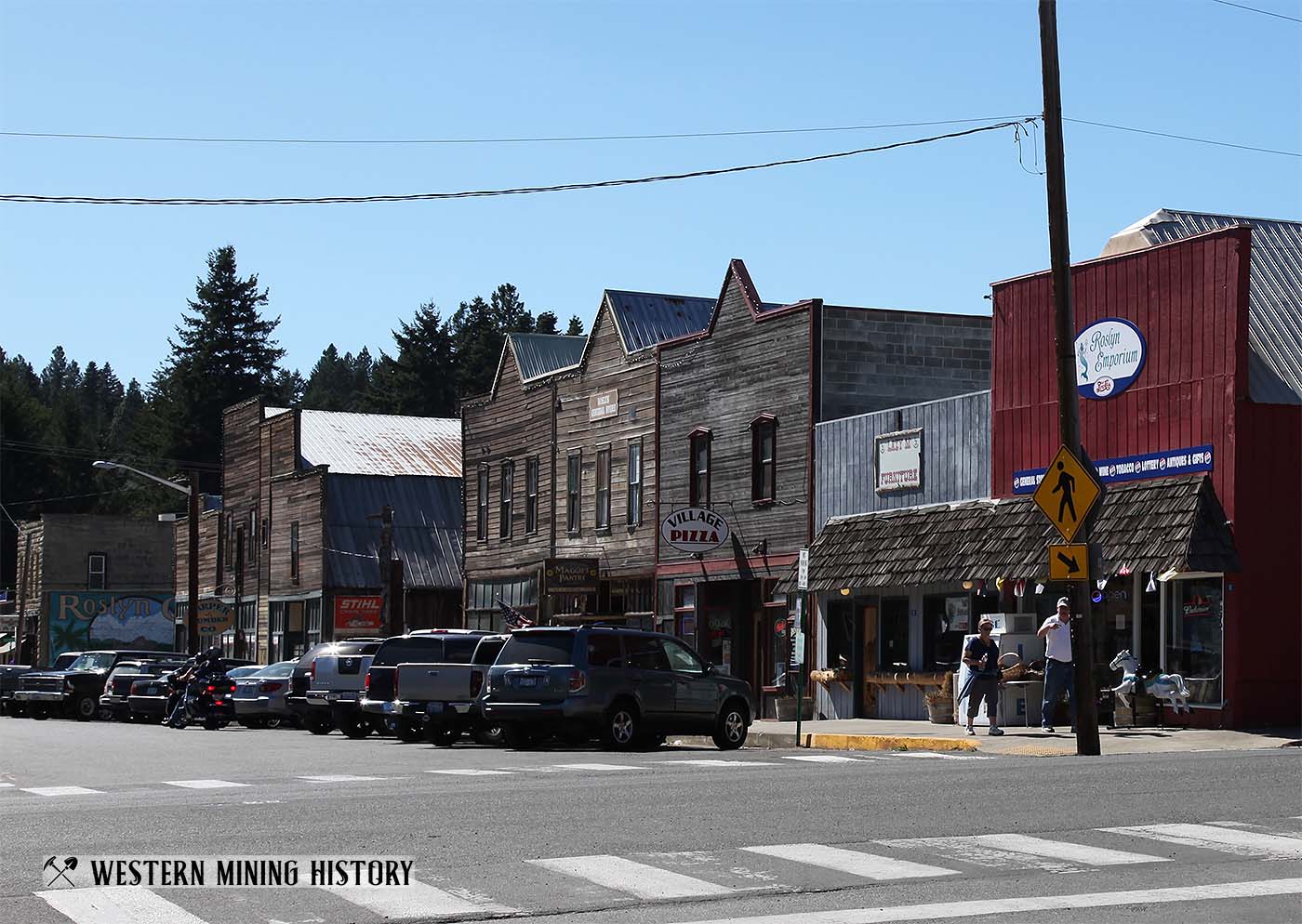
The following history of Roslyn was provided by Jan MacKell Collins.
Coal Mining Capital of the Pacific Northwest
Fans of “Northern Exposure,” which ran from 1990 to 1995, know where Roslyn is, since the small town served as a backdrop for the quirky television show. Although the story took place in Alaska, Roslyn’s historic buildings and remote appearance proved a much better filming location for the fictional town of Cicely.
At 2,222 feet in altitude, Roslyn was less prone to the snow and cold temperatures that would have been present in Cicely. But Roslyn is also steeped in coal mining and cultural history, and has quite a lively history.
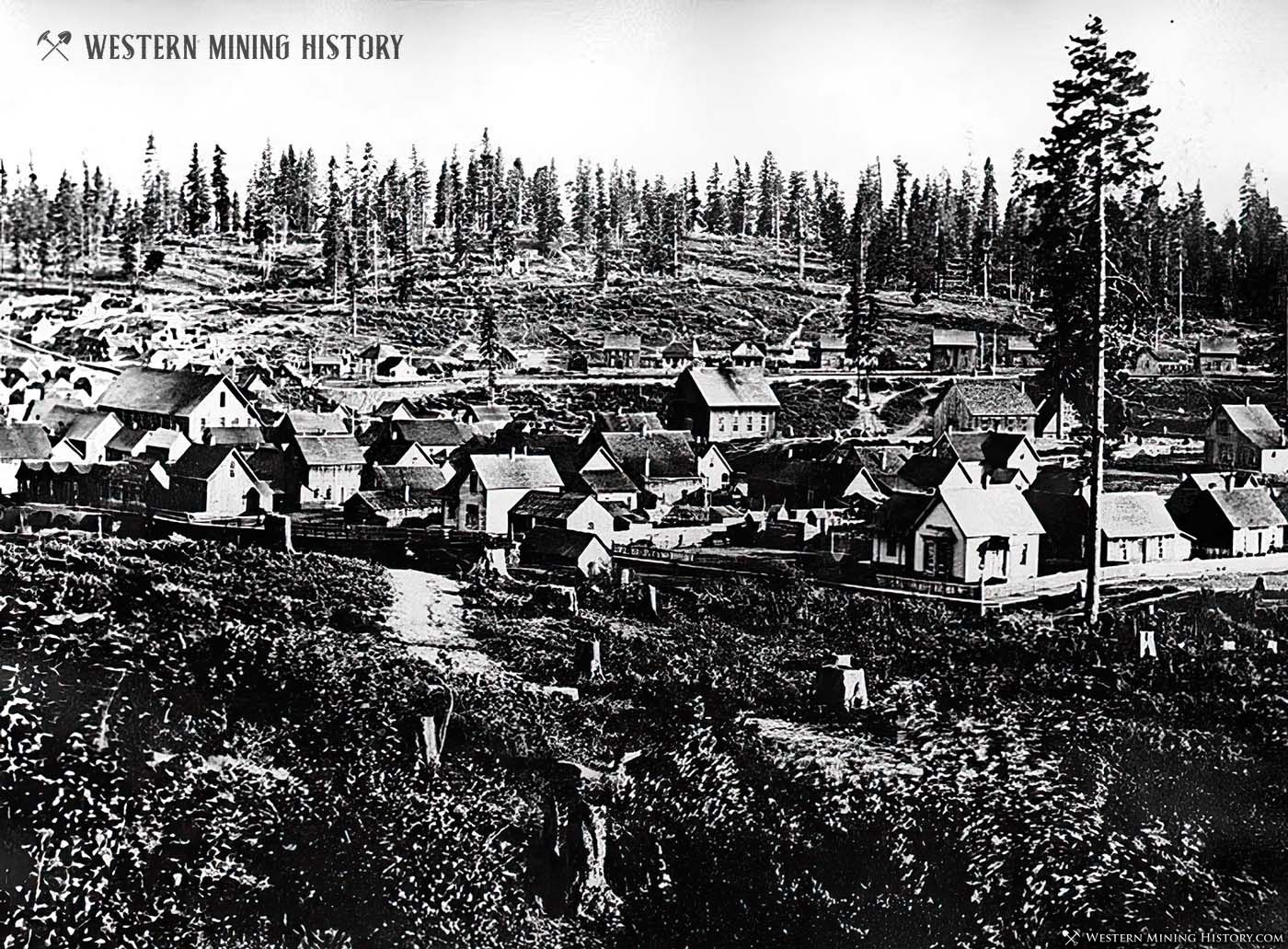
Roslyn’s story begins with coal, discovered in 1883 near Lake Cle Elum in Kittitas County. The first coal was mined in 1884 for use by a blacksmith shop at the county seat of Ellensburg. The following year, three men—C.P. Brosious, Ignatius Navarre and Walter Reed—found another large vein of coal in upper Smith Creek Canyon. Mining began in earnest as a coal mining camp, Roslyn, was formed in 1886.
An 1895 newspaper article verifies that a Mr. Bullitt, whose name has also been spelled Bullet and Gullitt, named Roslyn for a town of the same name in Delaware, where his sweetheart lived. He was said to be the vice president of the Northern Pacific Coal Mining Company, and platted the town. The first buildings were constructed of rough-hewn wood, and residents could get their water from nearby springs.
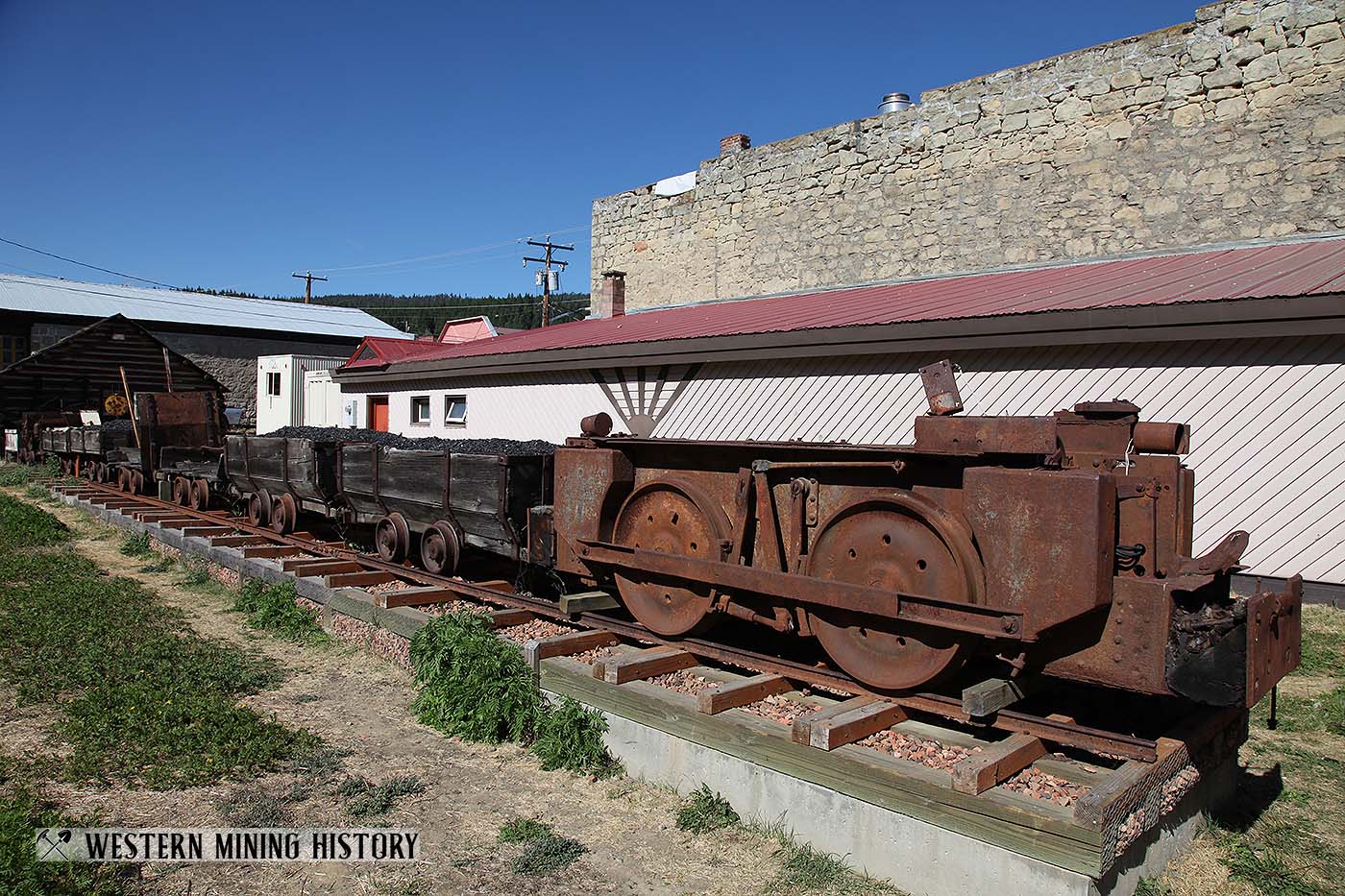
A short time after Roslyn was platted, the Northern Pacific Railway Company began making its way to Roslyn. Construction included building a tunnel under Stampede Pass, which was finished in 1888. By then, a virtual bouquet of railroad and mine workers from all over the world had made their way to the new coal camp. The countries represented included Croatia, England, Germany, Ireland, Italy, Poland, Scotland, Serbia, Slovakia and Wales, making for a most diverse community.
Soon, there were nearly 1,000 miners toiling at the coal mine at Roslyn. Private homes, boardinghouses, shops, a public hall and skating rink, three saloons and two churches dotted the neighborhoods.
Roslyn was a company town, owned and overseen by the Northern Pacific Coal mine. Residents were expected to do their shopping at the Northwestern Improvement Company Store (which still stands). Yet not even the company could do much when Roslyn experienced its first disastrous fire.
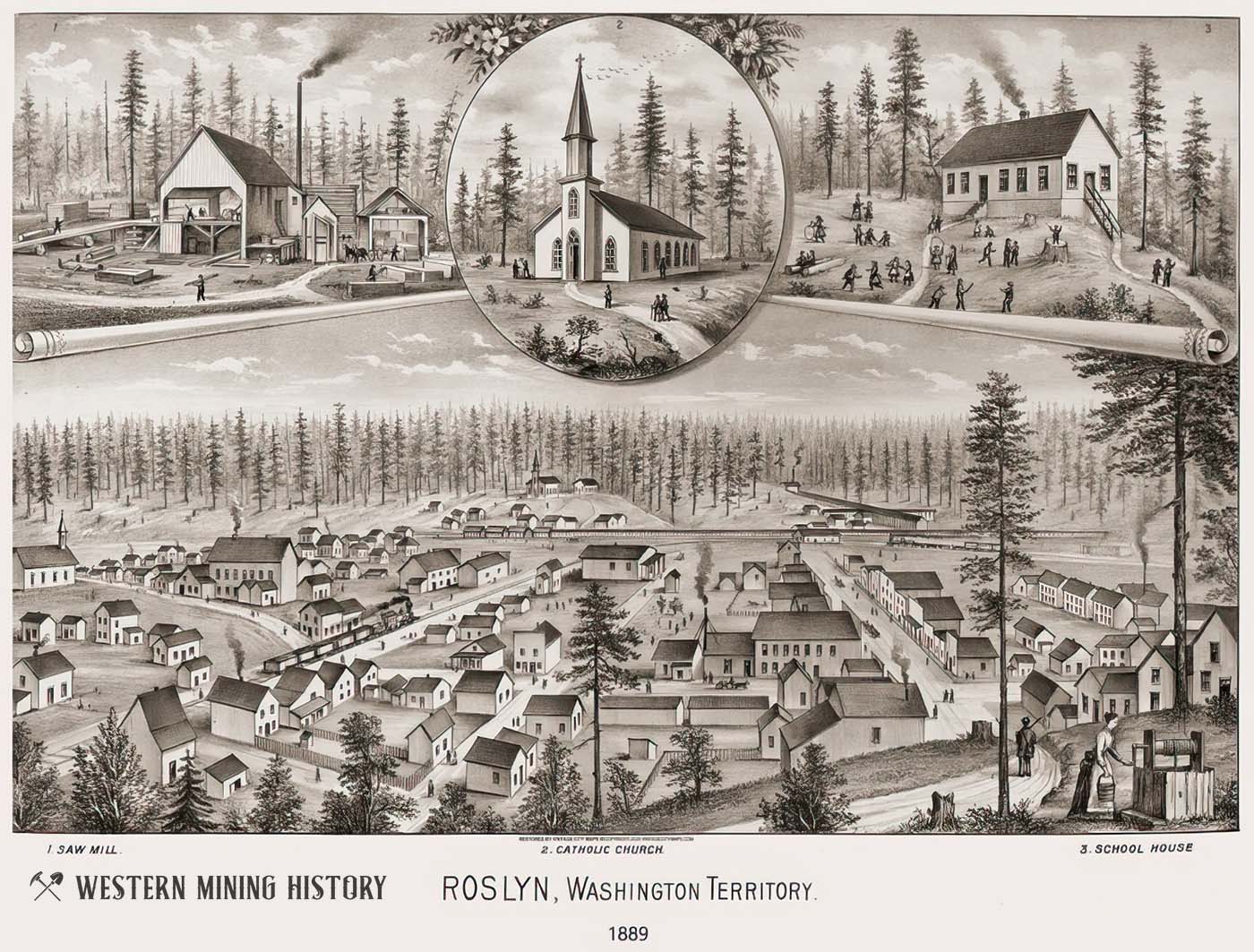
In July of 1888, the Spokane Falls Review reported that a local couple were out riding horses when their house caught fire. Before anyone could do anything, the flames quickly spread. Over 1,200 people were left homeless as nearly every building in town burned to the ground.
Spared were the railroad depot, the Northern Pacific mine’s office, a public hall and the only two churches in town. No doubt residents took the saving of these important buildings as a sign to keep the faith and rebuild, but another issue soon took place.
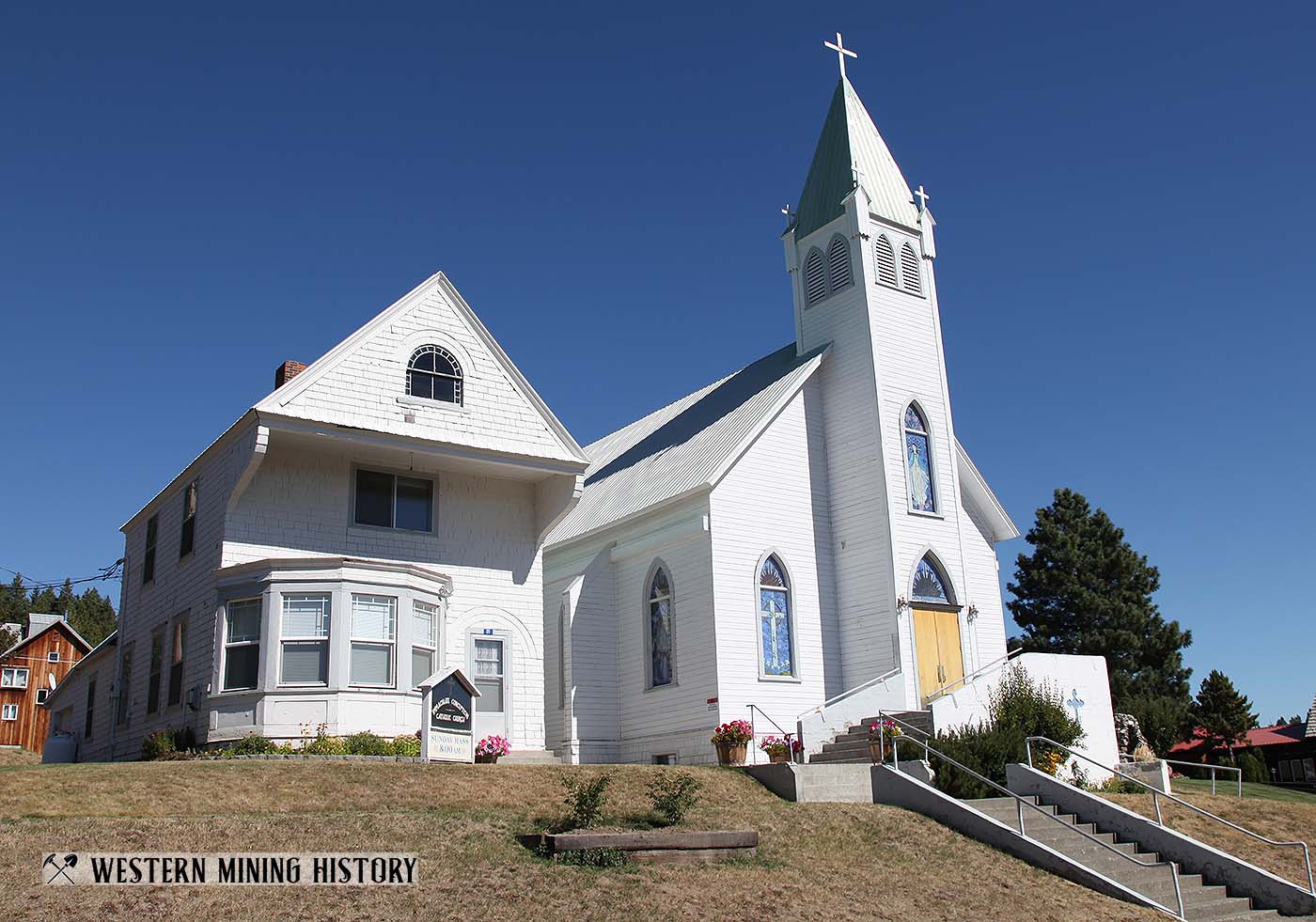
As the mine and its residents worked to rebuild Roslyn, the local miners objected to being required to work more than eight hours a day. In a time when miners averaged $3.00 per day across America, working more than eight hours for it was less than appealing.
Some of the men belonged to a union, the Knights of Labor, which was calling for a strike. When the mine laid off its union workers, they went on strike, resulting in the temporary closure of the mines.
As the Northwest Coal Company grappled for an answer, the superintendents at Mine No. 3 at the nearby community of Ronald came up with an idea. They hired some 50 Black miners from eastern parts of the country to work as “strikebreakers.”
The men came by train and were accompanied by armed guards who, when they began harassing the white townsfolk of Roslyn, were commanded by Territorial Governor Eugene Semple to disperse. He also shamed the mine company for trying to cause racial tensions.
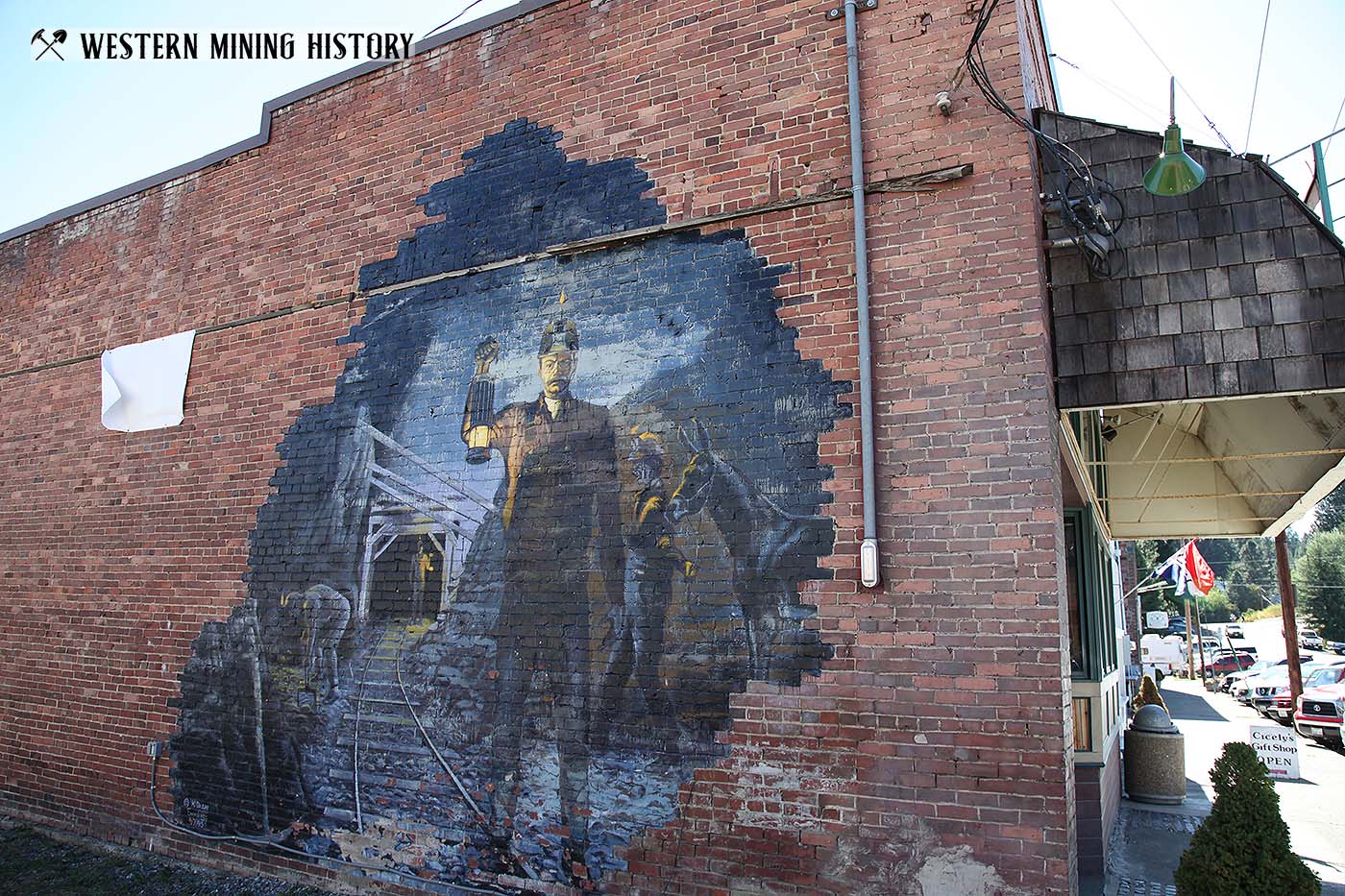
The mine dispersed the guards but continued hiring as many as 300 Black men to come to Roslyn over the next year. It was the largest migration of Blacks that the state of Washington had ever seen. The threat of racial violence remained present for some time but seeing how the population already included people from all over the world, everyone was already aware of the diversity among themselves.
When the Black residents offered up their own church for a much-needed school, any issues among the general populous quieted down for good. Everybody went back to work. Later, when the United Mine Workers formed in 1890, both Black and White miners joined the new union.

In the meantime, Roslyn rebuilt its town with brick and officially incorporated in 1889. Two unfortunate incidents occurred during 1892. The worst of them was an explosion at Mine No. 1 near Roslyn which killed 45 miners in April. A pocket of gas in the mine was to blame, and the incident remains the deadliest mining accident in Washington’s history. The second incident was the robbery of the Ben E. Snipes & Company Bank in September.
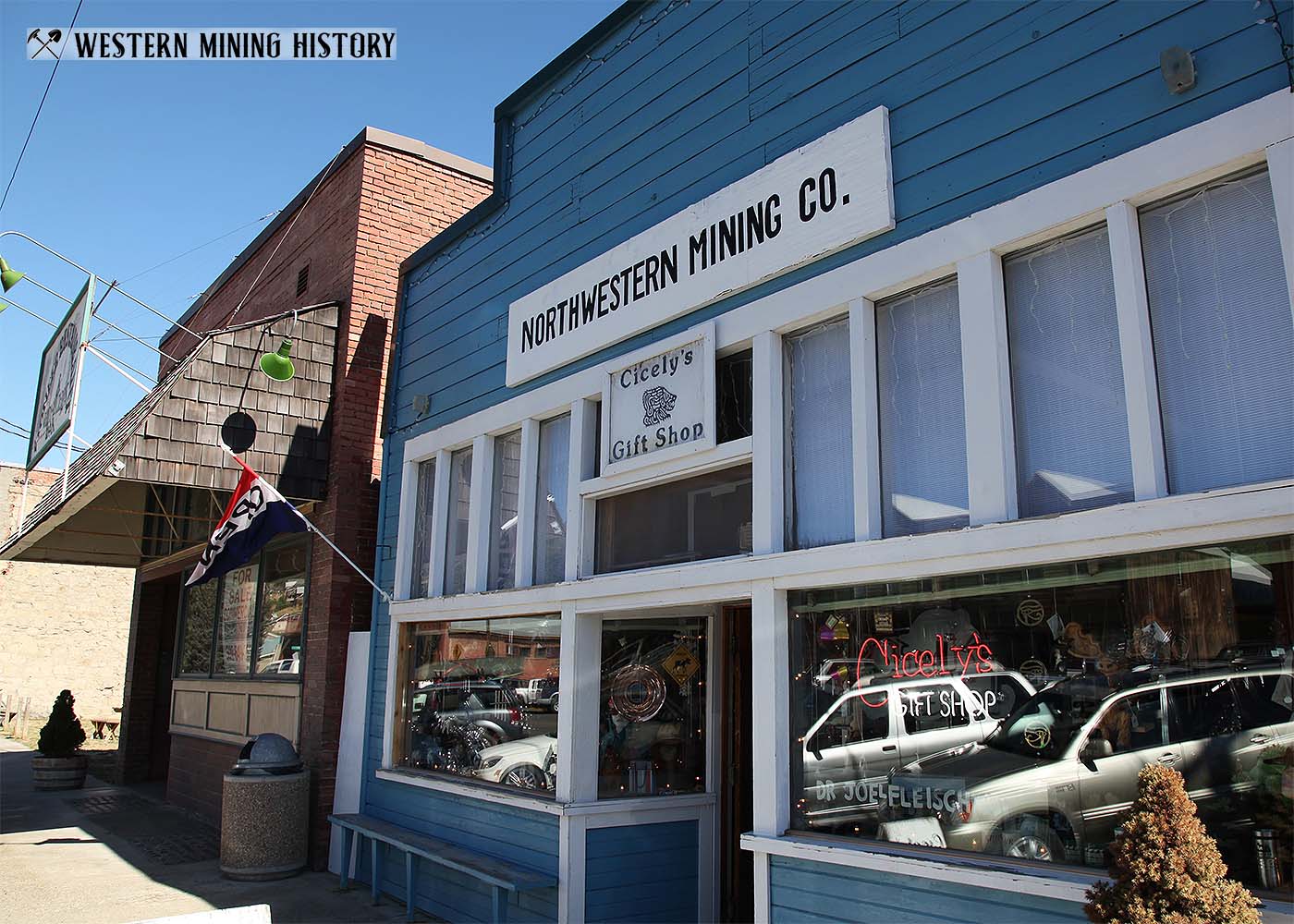
According to the Tacoma Daily Ledger, five armed bandits approached the bank, took $6,000 from the safe, and began shooting as they left. Luckily only two men received minor bullet wounds as townspeople scattered in every direction. All five men escaped, but two of them, Matt Warner and George McCarty were captured months later. Both had ridden with the infamous outlaw Butch Cassidy.
The men’s attempted escape from the Kittitas County courthouse in Ellensburg the day before their trial made the papers, as well as their recapture and the trial itself, which ended in a hung jury. The men were released, although both later admitted to taking part in the robbery.
Although another mine explosion in 1909 killed 14 men, the peak coal production of almost 2 million tons was reached in 1910. A decade later, however, the advent of diesel-powered trains, fuel oil and electricity led to less demand for coal. The mines began closing as miners and their families began moving away over time. The last mine closed in 1963.
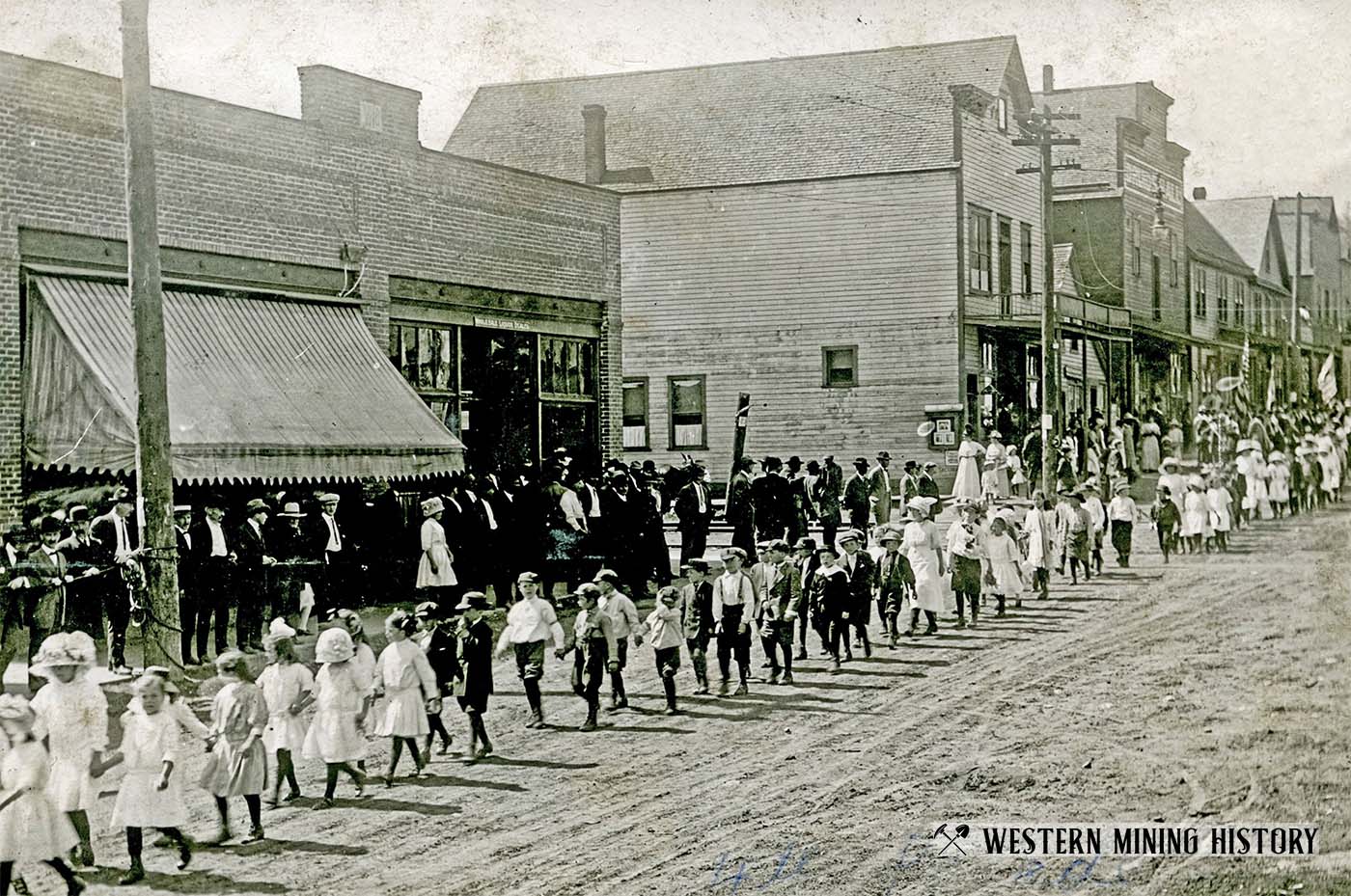
Roslyn might easily have become a ghost town if not for the 1970’s movement of artists and “hippies” who saw the town as a charming reminder of yesteryear. William Craven, whose family was the last Black family in town, made history when he was elected mayor in 1976. It was the first time a Black man had been elected mayor in Washington. Under Craven’s tutelage, Roslyn was added to the National Register of Historic Places in 1978.
The media soon found Roslyn as well; movies and television shows filmed there include “The Runner Stumbles” starring Dick Van Dyke and Kathleen Quinlan in 1979, “Northern Exposure,” and “The Man in the High Castle” in 2014, which places Roslyn in Cañon City, an actual town in Colorado.
Roslyn’s economy today is based on forestry and its high visitor count. A visit there includes beautiful hiking trails, an expansive historic cemetery, a museum, and several surviving structures from the days when coal was king in Roslyn.
Washington Gold
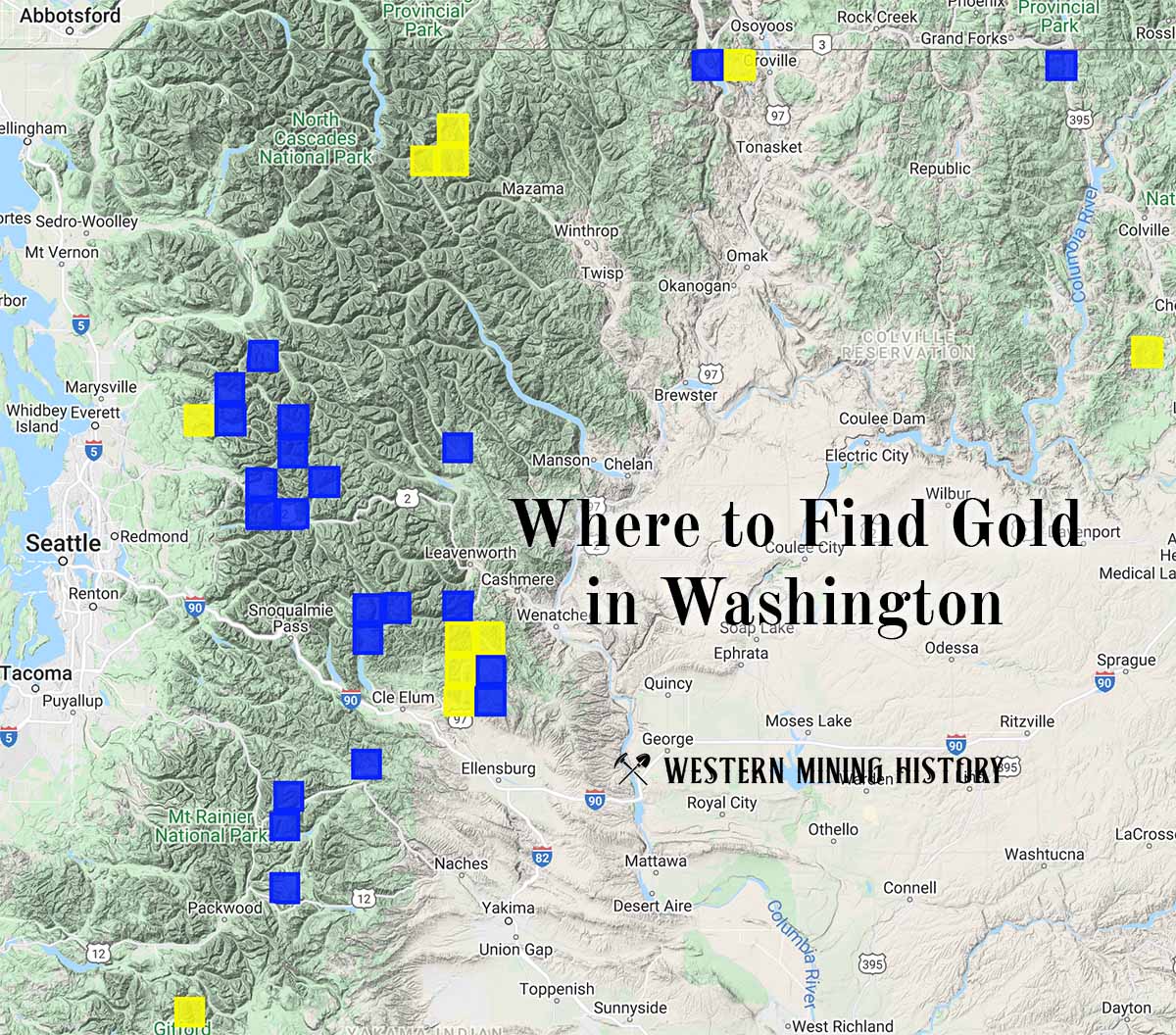
"Where to Find Gold in Washington" looks at the density of modern placer mining claims along with historical gold mining locations and mining district descriptions to determine areas of high gold discovery potential in Arizona. Read more: Where to Find Gold in Washington.
